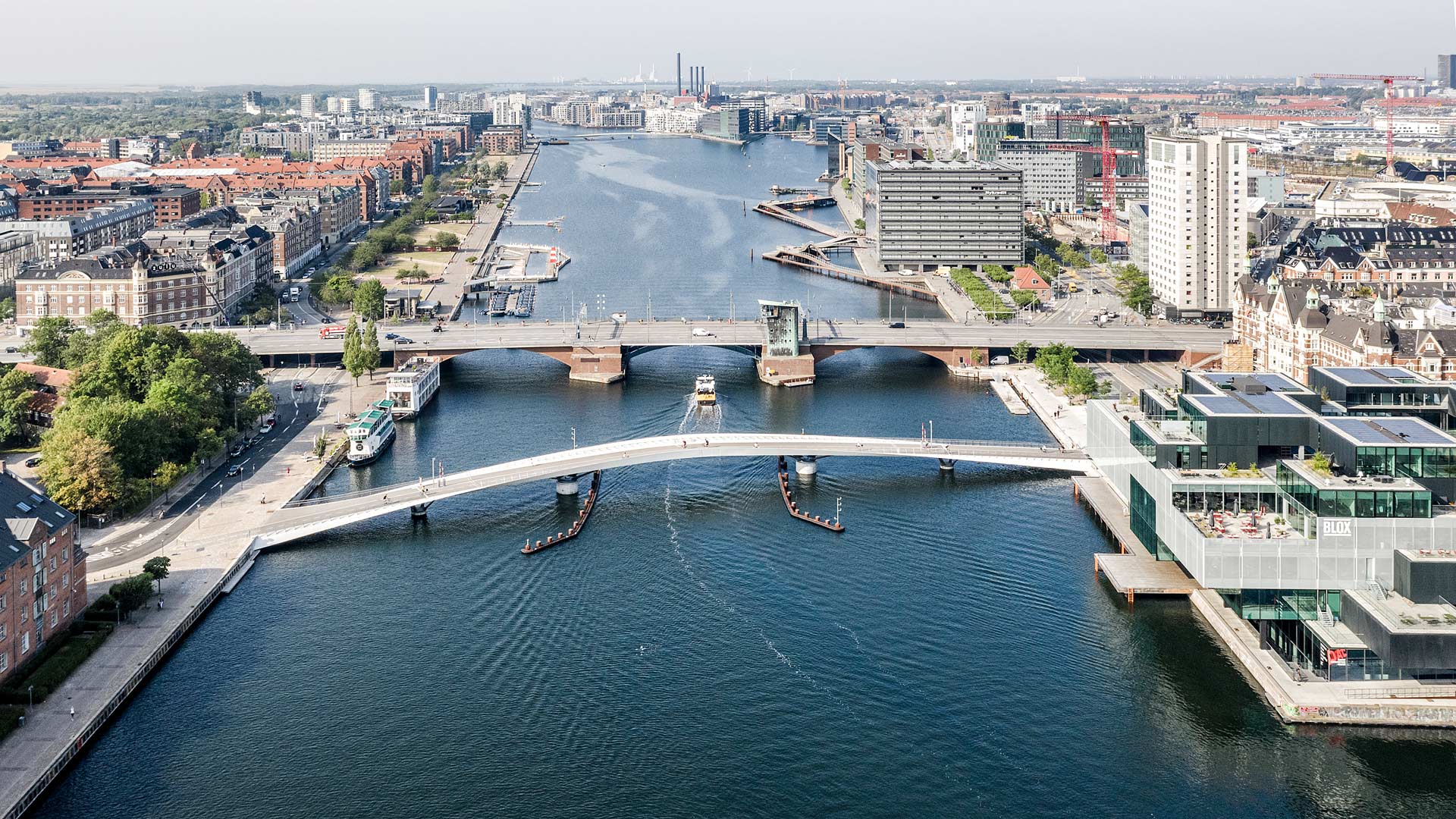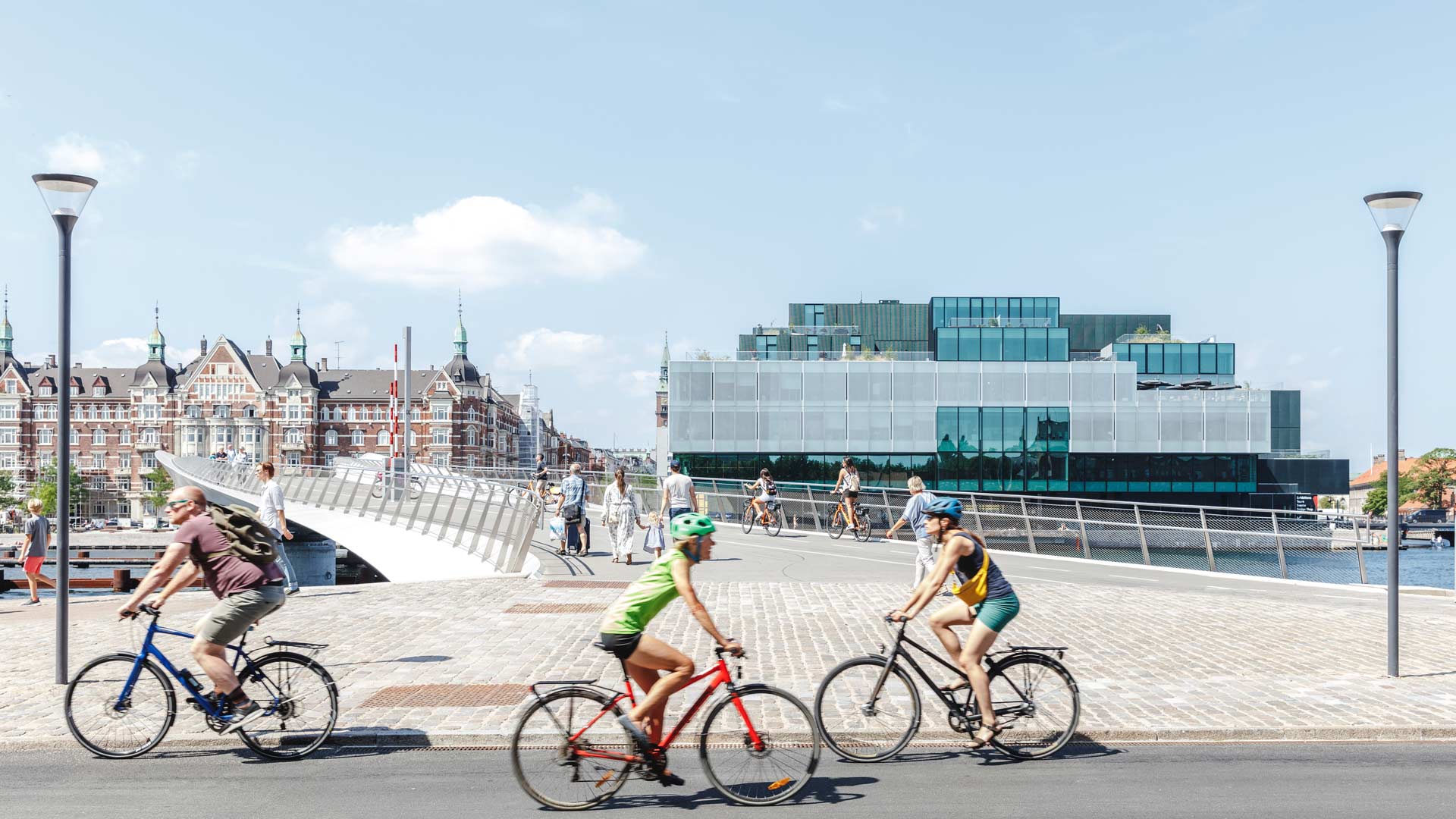Log ind info
Lille Langebro is a bicycle and pedestrian bridge situated to the north of Langebro bridge in Copenhagen which connects Vester Voldgade by BLOX on the western side of the harbour with Langebrogade on the Amager side. With as many as 10,500 people using the bridge every day, Lille Langebro contributes to easing congestion on Langebro and breathing new life into Christians Brygge, which hitherto has been somewhat desolate and mostly given over to traffic. Lille Langebro is a gift from Realdania to the City of Copenhagen, and was built by Realdania By & Byg.

The Port of Copenhagen is currently undergoing a transformation from an industrial harbour to a recreational waterfront area. Along the harbour-front, new cultural amenities and attractive homes are springing up, and a number of new bridges have been built, primarily for pedestrians and cyclists, both along the front and crossing the water.
Since 2001, the City of Copenhagen has had plans to build a bicycle and pedestrian bridge beside Langebro. In 2014, Realdania decided to gift the City of Copenhagen a bicycle and pedestrian bridge and thereby contribute to the development of a sustainable, cyclist-friendly and pedestrian-friendly city and an attractive environment for city living and prosperity in the capital.
Moreover, Lille Langebro is an integral part of the urban development project, which Realdania launched together with BLOX, aiming to forge stronger connections between the city centre and the waterfront, providing new routes and creating an attractive space for urban life on Christians Brygge, which hitherto has been a forgotten corner of the city, home mostly to cars.
Realdania By & Byg took charge of the Lille Langebro project, its planning and construction in partnership with the City of Copenhagen. Lille Langebro is just one element in Realdania By & Byg’s plan to develop new, experimental buildings. The City of Copenhagen took possession of Lille Langebro on 1 July 2019 and is responsible for the ongoing operation and maintenance of the bridge.

Credit: Rasmus Hjortshøj
Copenhagen
2015-2019